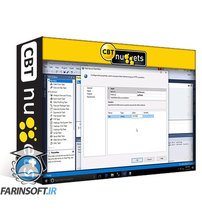در حال حاضر محصولی در سبد خرید شما وجود ندارد.

This intermediate Juniper JNCIS-SP training prepares learners to take the JN0-363 exam, which is the one required exam to earn the Juniper Networks Certified Specialist: Service Provider (JNCIS-SP) certification.
Taking fundamental knowledge of routing and switching implementations in Junos one step further, this Juniper Networks Certified Specialist: Service Provider is aimed at networking professionals who need more advanced tactics and approaches to configuring Juniper networks, particularly for service provider networks. The topics of this course include more advanced approaches to networking, like multiprotocol label switching, tunnels, spanning-tree protocols and Layer 2 bridging. The specialist certification JNCIS-SP is the first of Juniper’s three specialized certifications in service provider network administration.
در این روش نیاز به افزودن محصول به سبد خرید و تکمیل اطلاعات نیست و شما پس از وارد کردن ایمیل خود و طی کردن مراحل پرداخت لینک های دریافت محصولات را در ایمیل خود دریافت خواهید کرد.

--Configure-and-Verify-NETCONF-and-RESTCONF-main-resized.jpg)
آموزش کامل 350-401 ENCOR : پیکربندی و تست صحت NETCONF and RESTCONF

Azure DevOps Engineer Expert Online Training
-main-resized.jpg)
فیلم یادگیری کامل Cisco CCNP Automating Enterprise Solutions (300-435 ENAUTO)
-main-resized.jpg)
فیلم یادگیری کامل Microsoft Certified Azure Administrator Associate AZ-104

آموزش کامل و کاربردی SSIS در مایکروسافت SQL

نحوه عیب یابی پروتکل BGP

JNCIS-SP Online Training

مرکز داده حرفه ای JN0-681, JNCIP, DC
--Implement-Cisco-Extended-Event-Management-(EEM)-Applets-main-resized.jpg)
آموزش کامل 350-401 ENCOR : پیاده سازی Cisco Extended Event Management (EEM) Applets

کنترل دسترسی به شبکه سیسکو : تأیید هویت 802.1x و بررسی اجمالی Cisco ISE
اطلاع رسانی حذف دوره های قدیمی و تخفیفات نوروزی مشاهده